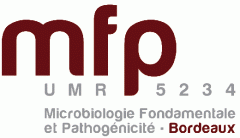Trypanosoma brucei is a parasite responsible for human African trypanosomiasis, a disease (also known as sleeping sickness) and Nagana in livestocks. This devastating disease is lethal if untreated, making it important to understand and characterise the basic biology of the pathogen. Current therapies are cumbersome to implement and toxic. It is, therefore, necessary to understand better the parasite life cycle and identify new therapeutic targets.
Durin g the T. brucei cell cycle, organelle positioning and segregation show a high degree of coordination and control. As such, T. brucei is a highly polarised cell with the transition zone of the flagellum present inside an invagination of the pellicular membrane called the flagellar pocket (FP). The FP is the only place of endocytosis and exocytosis. The FP is maintained around the flagellum by a collar (the FPC). We have shown that the FP is essential for the survival of the parasite and we identified the first essential protein for the biogenesis of the FP and FPC: BILBO1. BILBO1, therefore, represents a therapeutic target of choice.
g the T. brucei cell cycle, organelle positioning and segregation show a high degree of coordination and control. As such, T. brucei is a highly polarised cell with the transition zone of the flagellum present inside an invagination of the pellicular membrane called the flagellar pocket (FP). The FP is the only place of endocytosis and exocytosis. The FP is maintained around the flagellum by a collar (the FPC). We have shown that the FP is essential for the survival of the parasite and we identified the first essential protein for the biogenesis of the FP and FPC: BILBO1. BILBO1, therefore, represents a therapeutic target of choice.
We have identified BILBO1 protein partners. They are unique to the parasite and their function is not known. Recent data, however, indicate a role in the interaction with BILBO1 and with the cytoskeleton. The functional characterization of these proteins is carried out with reverse genetics (RNA interference), phenotype analysis during overexpression or deletion, identification of functional domains (mutagenesis, yeast two-hybrid, heterologous system) and by fluorescence imaging, in particular by super-resolution STED. In collaboration with structuralists, the interaction domains between BILBO1 and partners are studied to identify molecules able to block this interaction.
 T. brucei is also an excellent model system for studying proteins involved in the biogenesis, structure and function of cilia and flagella, and mutant proteins involved in male infertility.
T. brucei is also an excellent model system for studying proteins involved in the biogenesis, structure and function of cilia and flagella, and mutant proteins involved in male infertility.
Trypanosoma projects
– Functional characterisation of BILBO1 (PIs Derrick Robinson, Mélanie Bonhivers).
– Identification of new drug targets (PI Derrick Robinson)
– Identification and characterisation of proteins involved in the formation, structure, and function of the FPC (PIs Derrick Robinson, Mélanie Bonhivers)
– Characterisation of cilia-related proteins (PIs Mélanie Bonhivers, Denis Dacheux)
Toxoplasma project
Karine FRÉNAL (Research Associate CNRS), Aya ABOU HAMMOUD (ATER), Chloé ROUMEGOUS (PhD student)
Within its parasitophorous vacuole inside the host cell, Toxoplasma gondii tachyzoite divides by endodyogeny, a process during with two daughter cells bud inside the mother cell and consume it. Intriguingly, during the development of the daughter cells, their basal complex can be observed shortly after the emergence of the apical cap while the inner membrane complex (a membranous structure) expands via addition of membrane between these two structures. At the end of the daughter cell development, their basal complex constricts to shape mature parasites, which remain attached together through an intra-vacuolar connection allowing for the diffusion of soluble molecules. To better understand the final steps of division, we have undertaken the investigation of the basal complex of T. gondii tachyzoite to identify its molecular components and characterize their role during the constriction and cytokinesis processes. Towards this end, we use reverse genetic approaches to tackle the localization and function of the proteins of interest and analyze their phenotypes using different approaches of cell biology including microscopy-based assays.
